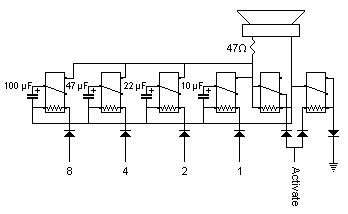As I try to envision how this crazy circuit will look like to the candid users, I wonder : how will they interact with the machine ?
The machine should be more or less self-sufficient, with an electronic assembler (assembly helper) to configure the switches of a small program, and #DYPLED modules all over the place to witness the effects of each instruction.
But this is not enough: that's only my programer's side, my bias toward system development, but how could this system be used ?
It's a 16-bits binary machine that introduces basic concepts of computing. Computations fall in two major types : computational/calculations, and non-computational (as in "data shuffing"). The limited amount of memory makes shuffling hard but this should not be brushed off.
The obvious application is to play with numerical algorithms : how to compute approximations of functions, the like... this leads me to look at another project again : #RISC Relay CPU is definitely a calculator, while I'm trying to make a computer...
A calculator only deals with numbers and a numerical keypad is all that's needed, along with 7-segments digits (I got #DYPLED for this already). But can we please extend the idea further ?
I'm thinking about adding an I/O bus. IN and OUT instructions will access physical 16-bits ports where you can hook up any peripheral device you like. Maybe a serial line, external storage or a #Low-resolution scanner for cheap data input?
A dumb electromechanical keyboard is possible but I don't want to restrict its layout or purpose. And then, what about the display ? What convenient alphanumeric interface exists ? (other than 16×2 characters LCD modules) ? How is it possible to create a 16×32 bitmap display ? Flip-dots ?
Sound is easy, though, as Rory provided the schematic of his TIM-8:
 Yann Guidon / YGDES
Yann Guidon / YGDES
Discussions
Become a Hackaday.io Member
Create an account to leave a comment. Already have an account? Log In.